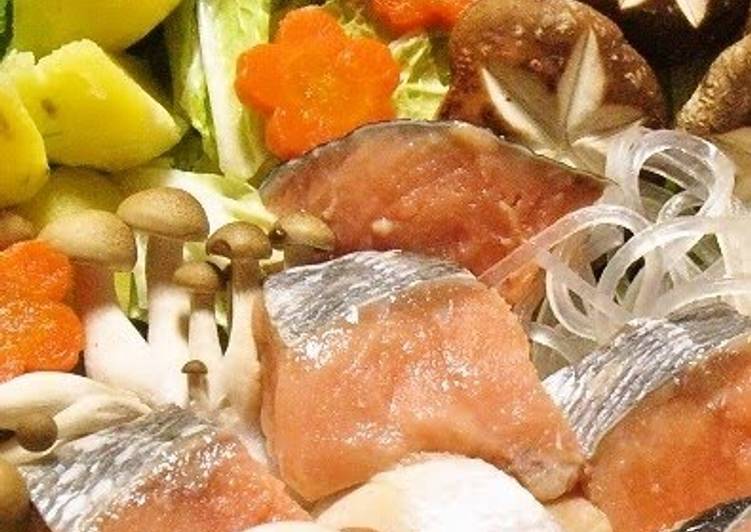Hokkaido Specialty: Salmon & Vegetable Hotpot. Hokkaido is renowned for the high quality and freshness of its seafood, as the cold waters surrounding Japan's northernmost prefecture are ideal for fish and sea vegetation. Maturing masu salmon from Japanese coastal waters of the Okhotsk Sea, Japan Sea, and western The former seven issues were published in Technical Reports of Hokkaido Salmon Hatchery (Fish. Best Specialty Hotels in Hokkaido, Japan.
 High quality salmon roe, brand Hokkaido ruby salmon is.
Hokkaido Hokkaido (北海�) is the northernmost of the four main islands that make up Japan.
The area is famous for Sapporo Beer, plus brewing and distilling in general, along with fantastic snow.
You can cook Hokkaido Specialty: Salmon & Vegetable Hotpot using 13 ingredients and 8 steps. Here is how you cook that.
High quality salmon roe, brand Hokkaido ruby salmon is.
Hokkaido Hokkaido (北海�) is the northernmost of the four main islands that make up Japan.
The area is famous for Sapporo Beer, plus brewing and distilling in general, along with fantastic snow.
You can cook Hokkaido Specialty: Salmon & Vegetable Hotpot using 13 ingredients and 8 steps. Here is how you cook that.
Ingredients of Hokkaido Specialty: Salmon & Vegetable Hotpot
- It's 400 grams of Fresh salmon.
- Prepare 1 of Chinese cabbage, potatoes, kudzu noodles, Japanese leek, carrot, shiitake, enoki, shimeji mushrooms, mizuna, etc..
- You need 20 grams of Butter.
- Prepare of Sauce:.
- You need 1200 ml of Kombu based dashi stock.
- You need 80 grams of Miso.
- It's 2 tbsp of Mirin.
- It's 1 tsp of Sugar.
- It's 2 tbsp of Sake.
- You need of Ramen to finish.
- You need 3 of servings Chinese noodles.
- It's 5 slice of Char siu.
- Prepare 1/4 tsp of Doubanjiang.
I have fond memories of slurping Hokkaido-style "nabe" -- a hot pot with salmon and a miso broth cooked at the table -- during my travels in Japan. It's simple, nutritious, and warms the body & soul! Salmon roe, scallops, salmon, tuna… seafood in any number of combinations is piled high on top of Crab is the undisputed king of seafood in Hokkaido. Dpending on the seaon, you're most likely to see.
Hokkaido Specialty: Salmon & Vegetable Hotpot instructions
- Wash the potatoes and wrap them with plastic wrap while still wet. Microwave for 5 minutes. While hot, use a knife to remove the skins. Boil the carrots..
- Remove the stems from the shiitake mushrooms. To let them easily soak up the flavors of the hot pot, cut a notch on the caps..
- Put the water and the konbu in a hotpot. If possible, leave it for 2 hours. Turn the heat on very low and warm until just before boiling. Let it simmer for about 5 minutes..
- Combine the miso, mirin, sugar, and sake..
- Put the vegetables and salmon into the hotpot. Pour in 2/3 of the combined miso ingredients from Step 4. Add 20 g of butter and heat..
- Once the vegetables have been cooked about 80%, add the remaining 1/3 of the combined miso ingredients from Step 4. Here is when you should add any fillings that cook quickly (such as mizuna, chrysanthemum greens, oysters, etc.).
- After eating the hotpot, add the ramen, char siu, and doubanjang to the pot to make miso ramen!.
- Use the konbu from making the soup stock to make "tsukudani" (preserved food boiled in soy sauce)!. https://cookpad.com/us/recipes/143989-kombu-tsukudani-using-leftover-dashi-kombu.
Hokkaido cuisine is a little different from the rest of the country. Ramen in Hokkaido is incredibly good and very popular, perhaps because the cold climate is a perfect reason for some warming. Salmon & Freshwater Fisheries Reseach Institute, Hokkaido Research Organization. Hokkaido Island is one of the most active regions for Pacific salmon hatchery programmes, with ca. Footage of the salmon run in Hokkaido, Japan, captured on Saturday morning.